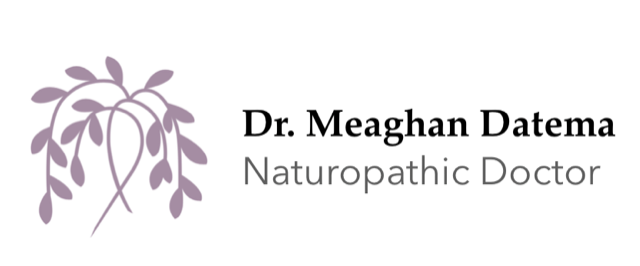As I am writing this it is the end of January, it has been hovering about 0 degrees since November, and I haven’t seen the sun for several days (drawbacks of working in an office and the short winter days). This is the time of year when I start to experience a bit of the winter blues along with 15% of Canadians. Winter blues is a depressed mood for a few days during the winter time, typically during a stretch a grey days with no sunshine. This is different than Seasonal Affective Disorder which is commonly experienced during the winter months. It is estimated that 6% of Canadians suffer from Seasonal Affective Disorder.
In this blog I will be going over what seasonal affective disorder is, what the symptoms are, and some natural treatment considerations.
What is Seasonal Affective Disorder?
Seasonal Affective Disorder is a form of depression that is only experienced during consistent times of the year. Most often it is experienced during the late fall and winter months each year. It is hypothesized that it is related to the amount of sunshine and light during the winter months. Light may not appear to be important to your health, but it plays an integral role in regulating your circadian rhythm. Your circadian rhythm regulates the quality and quantity of sleep. A disruption to your circadian rhythm due to lack of light and sunshine will disrupt your sleep leading to poorer quality of sleep and lower mood.

Light and sunshine also appear to be important in the production and use of serotonin in your body through the formation fo Vitamin D. Serotonin is your “happy” hormone and lower blood levels are often found in people with depression. Studies investigating seasonal fluctuations of serotonin in your blood found that serotonin levels are higher during the summer and early fall compared to the lower levels found in the winter and early spring. At this time the way this works it is still unclear, although it is hypothesized that Vitamin D is required to make serotonin. Researchers have concluded that the lack of light disrupts our circadian rhythm and our serotonin production contributing to the development of seasonal affective disorder.
Signs and symptoms of Seasonal Affective disorder
The symptoms of Seasonal Affective Disorder are similar to those of major depression, but are limited to a particular time of year. Symptoms include a depressed mood for greater than two weeks that
- Is present most days and lasts most of the pay, and
- Impairs work performance and/or social relationships
Other symptoms may include:
- Changes in sleep patterns; too much or too little sleep
- Changes in appetite and weight
- Loss of interest in work, hobbies, or relationships
- Withdrawal from social situations
- Irritability and agitation
- Fatigue
- Difficulty concentrating, poor memory
- Thoughts of suicide
People who are at an increased risk include:
- Women
- People who live further from the equator
- Younger people. The risk decreases with age
- People with a family history of seasonal affective disorder or other forms of depression
Natural treatments
Light therapy is the primary treatment recommendation for people with seasonal affective disorder. This may include increasing time outside in the early morning light (if possible). Otherwise, the use of light boxes have been recommended. It is recommended to sit in front of a light box that emits 10,000 lux for 30 minutes in the morning.
Vitamin D supplementation is also commonly used. Vitamin D is added when there are insufficient blood levels, ideally vitamin D levels should be 75-120 nmol/L. Talk to your doctor or naturopath to have your vitamin D levels tested.
Mood supporting supplements such as 5-HTP, St. John’s wort, and Lavender have been suggested. Use of these products may be helpful on an individual basis, always discuss new supplements with your naturopath before starting them.
If you are interested in learning more, click the link below to book a consultation with me and we will establish at comprehensive treatment plan to address your seasonal affective disorder.
Yours in health,

References
- https://www.camh.ca/en/health-info/mental-illness-and-addiction-index/seasonal-affective-disorder
- Young SN. How to increase serotonin in the human brain without drugs. J Psychiatry Neurosci. 2007;32(6):394-9.
- https://www.psychiatry.org/patients-families/depression/seasonal-affective-disorder
- Melrose S. Seasonal Affective Disorder: An Overview of Assessment and Treatment Approaches. Depress Res Treat. 2015;2015:178564.

